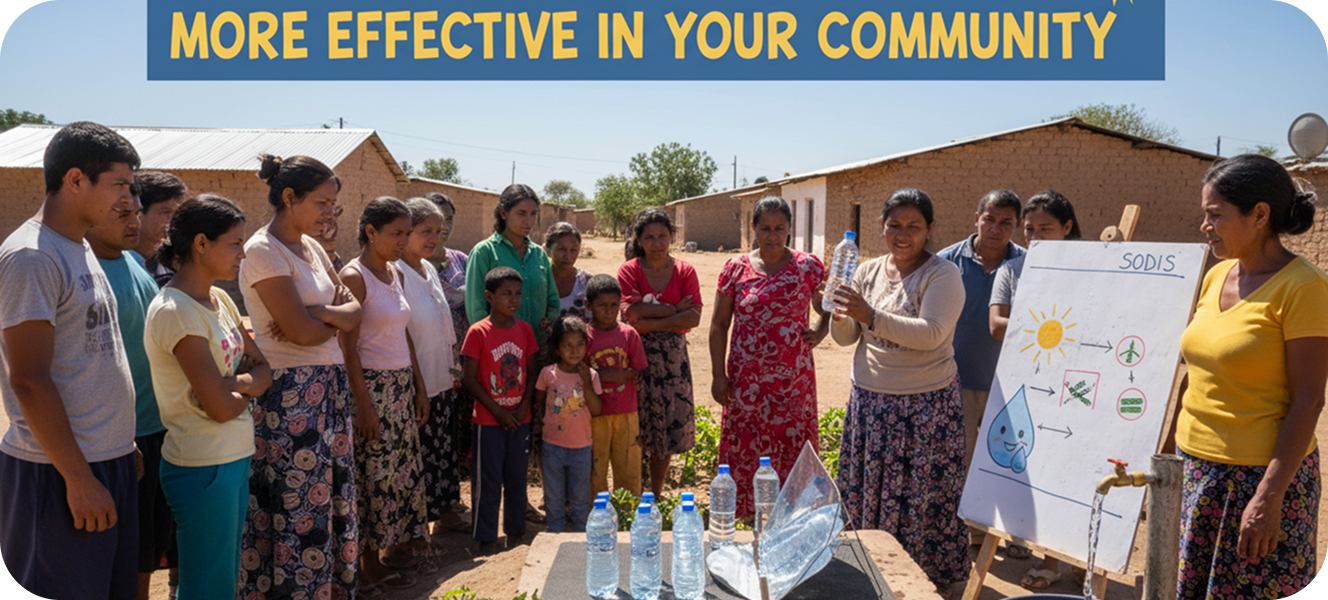
Solar Water Disinfection (SODIS) is a simple method with life-saving impact. By filling a bottle and leaving it under the sun, families can turn contaminated water into safe drinking water. But with new research showing that pharmaceutical residues can weaken SODIS, communities need to take a few extra steps to keep their water safe.
Here are five practical strategies you can implement right away.
1. Pre-Filter Your Water
Cloudy water reduces Ultraviolet (UV) penetration. Use a clean cloth, mesh, or even sand filtration to remove dirt and debris. Remember, clearer water = stronger UV effect.
2. Extend Sun Exposure
The standard rule is 6 hours in strong sunlight for SODIS to occur. If water is contaminated or it's cloudy, leave for 8-12 hours. Longer exposure also helps counteract the shielding effect of pharmaceuticals.
3. Rotate Bottles and Use Reflective Surfaces
Place bottles on shiny metal sheets, rooftops, or white-painted boards. Rotate every 1-2 hours for even exposure. This boosts UV intensity and increases microbial inactivation.
4. Use Natural Additives
A small squeeze of lemon or lime can improve disinfection. Citrus acids stress microbes and complement UV exposure. This is a low-cost, safe, and natural booster.
5. Stop Medicines from Reaching Water in the First Place
Educate your household and neighbours to never to dump leftover drugs into rivers or toilets. Encourage safe collection programs. The fewer pharmaceuticals in the water, the more effective SODIS becomes.
Conculsion
SODIS is a combination of science and survival. By making a few adjustments and spreading awareness about pharmaceutical pollution, communities can continue to benefit from this low-cost, sustainable solution. Share these five steps in your village, school, or community group. Together, we can make the sun a stronger ally in the fight for safe water.
